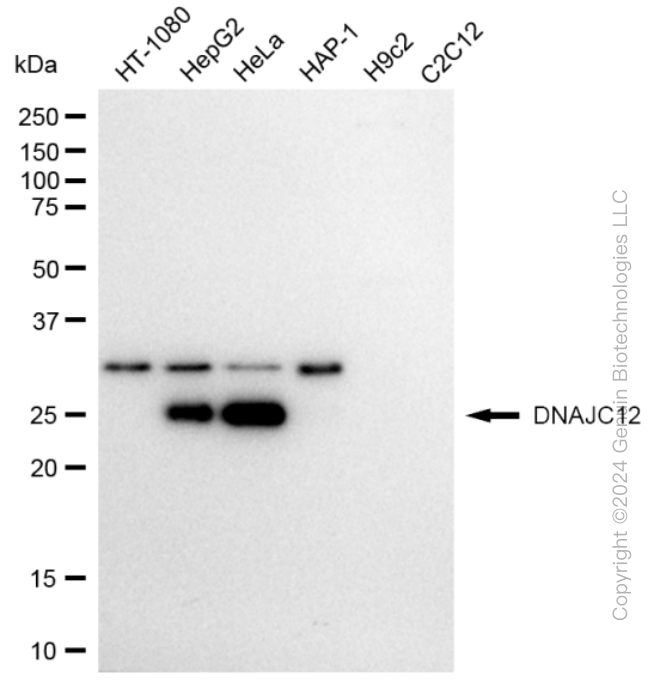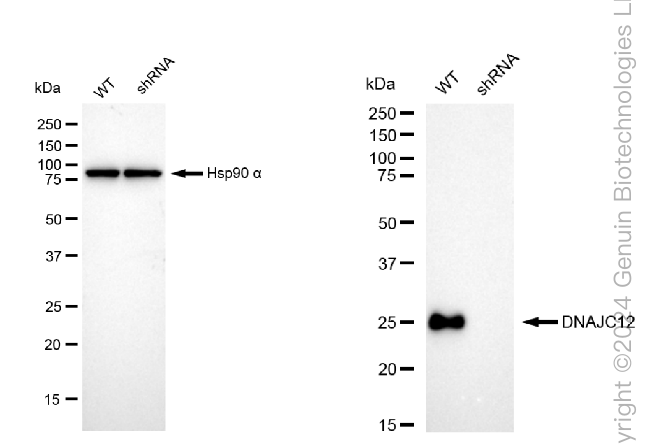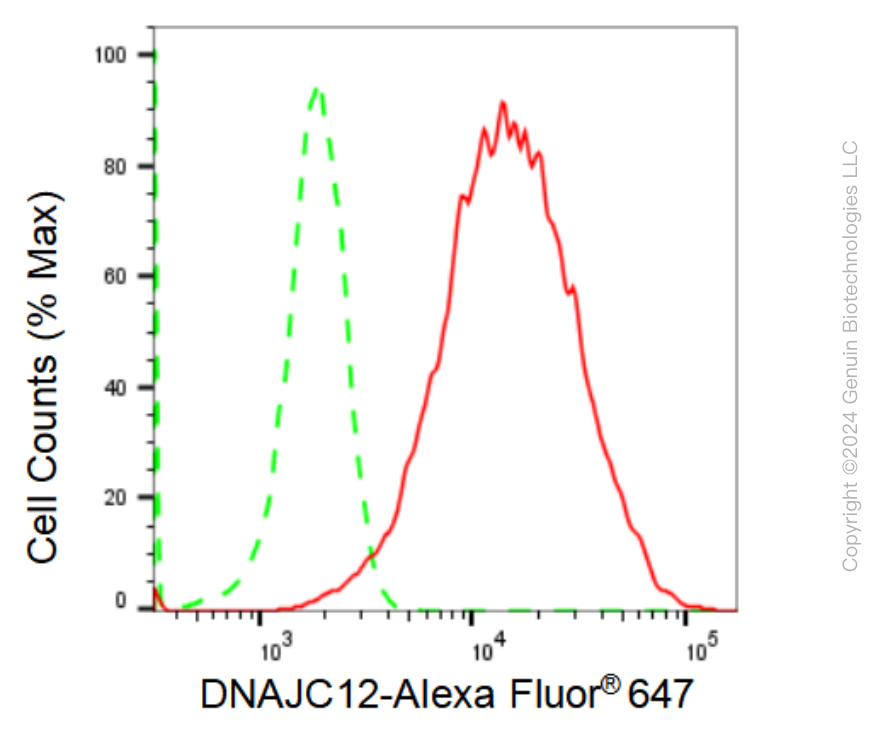KD-Validated Anti-DNAJC12 Rabbit Monoclonal Antibody
Rabbit monoclonal antibody
- SPECIFICATION
- CITATIONS
- PROTOCOLS
- BACKGROUND

Application
| WB, FC, ICC |
|---|---|
| Primary Accession | Q9UKB3 |
| Reactivity | Human |
| Clonality | Monoclonal |
| Isotype | Rabbit IgG |
| Clone Names | 23GB 1815 |
| Calculated MW | Predicted, 23 kDa, observed, 23 kDa |
| Gene Name | DNAJC12 |
| Aliases | DNAJC12; DnaJ Heat Shock Protein Family (Hsp40) Member C12; JDP1; DnaJ (Hsp40) Homolog, Subfamily C, Member 12; DnaJ Homolog Subfamily C Member 12; J Domain-Containing Protein; J Domain Protein; J Domain Containing Protein 1 (JDP1); HPANBH4 |
| Immunogen | A synthesized peptide derived from human DNAJC12 |
| Gene ID | 56521 |
|---|---|
| Other Names | DnaJ homolog subfamily C member 12, J domain-containing protein 1, DNAJC12, JDP1 |
| Name | DNAJC12 |
|---|---|
| Synonyms | JDP1 |
| Function | Probable co-chaperone that participates in the proper folding of biopterin-dependent aromatic amino acid hydroxylases, which include phenylalanine-4-hydroxylase (PAH), tyrosine 3-monooxygenase (TH) and peripheral and neuronal tryptophan hydroxylases (TPH1 and TPH2). |
| Cellular Location | [Isoform a]: Cytoplasm |
| Tissue Location | Expressed at high levels in brain, heart, and testis, and at reduced levels in kidney and stomach |

Thousands of laboratories across the world have published research that depended on the performance of antibodies from Abcepta to advance their research. Check out links to articles that cite our products in major peer-reviewed journals, organized by research category.
info@abcepta.com, and receive a free "I Love Antibodies" mug.
Provided below are standard protocols that you may find useful for product applications.
If you have used an Abcepta product and would like to share how it has performed, please click on the "Submit Review" button and provide the requested information. Our staff will examine and post your review and contact you if needed.
If you have any additional inquiries please email technical services at tech@abcepta.com.














 Foundational characteristics of cancer include proliferation, angiogenesis, migration, evasion of apoptosis, and cellular immortality. Find key markers for these cellular processes and antibodies to detect them.
Foundational characteristics of cancer include proliferation, angiogenesis, migration, evasion of apoptosis, and cellular immortality. Find key markers for these cellular processes and antibodies to detect them. The SUMOplot™ Analysis Program predicts and scores sumoylation sites in your protein. SUMOylation is a post-translational modification involved in various cellular processes, such as nuclear-cytosolic transport, transcriptional regulation, apoptosis, protein stability, response to stress, and progression through the cell cycle.
The SUMOplot™ Analysis Program predicts and scores sumoylation sites in your protein. SUMOylation is a post-translational modification involved in various cellular processes, such as nuclear-cytosolic transport, transcriptional regulation, apoptosis, protein stability, response to stress, and progression through the cell cycle. The Autophagy Receptor Motif Plotter predicts and scores autophagy receptor binding sites in your protein. Identifying proteins connected to this pathway is critical to understanding the role of autophagy in physiological as well as pathological processes such as development, differentiation, neurodegenerative diseases, stress, infection, and cancer.
The Autophagy Receptor Motif Plotter predicts and scores autophagy receptor binding sites in your protein. Identifying proteins connected to this pathway is critical to understanding the role of autophagy in physiological as well as pathological processes such as development, differentiation, neurodegenerative diseases, stress, infection, and cancer.





